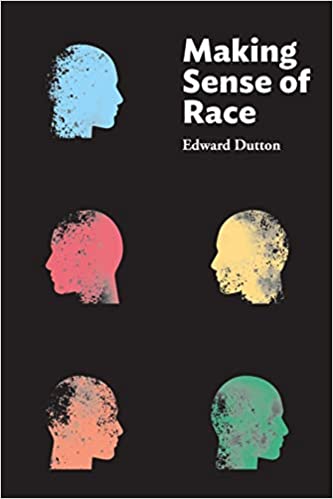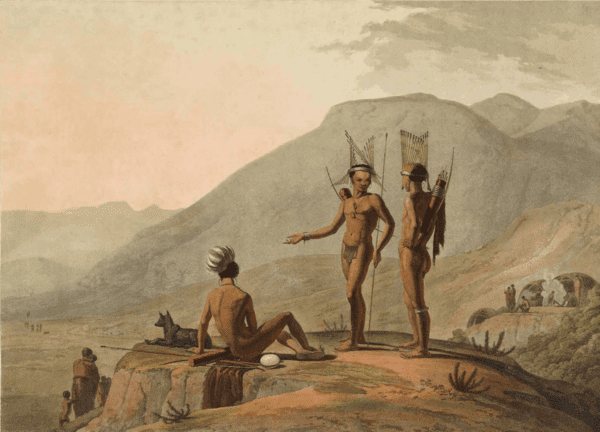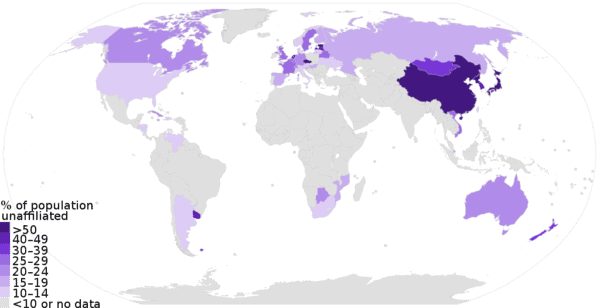[Crossposted from American Renaissance.]
Earlier: MAKING SENSE OF RACE—Or, Refuting Race Deniers Like Angela Saini by Edward Dutton
 The first chapter of Edward Dutton's book Making Sense of Race ends with these words: “Clearly, race is a biological reality. It needs to be understood. The most up-to-date research on it needs to be widely known. Its implications need to be explored. That is the purpose of this book.” It would be hard to think of a more worthy goal, and Edward Dutton, who teaches evolutionary psychology at Asbiro University in Poland, achieves it admirably. The pity is that books like this are shoved into obscurity, so the people who need to read it won’t.
The first chapter of Edward Dutton's book Making Sense of Race ends with these words: “Clearly, race is a biological reality. It needs to be understood. The most up-to-date research on it needs to be widely known. Its implications need to be explored. That is the purpose of this book.” It would be hard to think of a more worthy goal, and Edward Dutton, who teaches evolutionary psychology at Asbiro University in Poland, achieves it admirably. The pity is that books like this are shoved into obscurity, so the people who need to read it won’t.
For those who do, there are many rewards. For anyone new to the biology of race, Dr. Dutton describes how evolution produced physical race differences. He also includes an excellent introduction to how r-K theory applies to race, a subject first explored in 1994 by Philippe Rushton and that remains one of the most important modern perspectives on race. This book is an excellent Rushton primer, and even adds important refinements to his work.
Dr. Dutton has no patience for the idea that race is a social construct. He writes that the animal equivalent of race—subspecies—is universally accepted. One common definition of a subspecies is a group within a species that can be distinguished by untrained observers at least 75 percent of the time. By that standard, races are clearly subspecies.
People who deny race point out that there is more genetic variation within members of the same race than between races—but that’s true for dog breeds, and not many people think the difference between a terrier and a pug is all in our minds. As with humans, the DNA that varies most within a breed make little or no genetic difference. The 30 percent of the dog genome—about 15 percent in the case of humans—where we find patterns of difference between subspecies are the parts that produce physical and temperamental differences. In the case of dogs, these are the traits breeders cared about; in the cases of humans, they are the traits that had evolutionary importance.
Sports fans note race differences all the time. The last time a white man won the 100-meter dash in the Olympics was in 1980 (he was a Scot named Allan Wells). Even then, men of West African origin dominated the sprints. Likewise, every winner in the World’s Strongest Man competition, held each year since 1977, has been white.
Earlier today Thor Björnsson aka "The Mountain" from Game of Thrones, broke the deadlift world record, lifting 501 kg (1,105 lbs) from his home in Reykjavik, Iceland.
— ESPN Stats & Info (@ESPNStatsInfo) May 2, 2020
He won the World's Strongest Man competition in 2018 and has finished 3rd or better every year since 2012. pic.twitter.com/wm6cCHzQTK
There are very few black swim champions; their bones are denser so they float lower in the water, which increases drag. The best ping pong players are Asians, probably because the sport requires such quick reactions. Of all the races, Asians have the quickest reaction times and the highest intelligence. Blacks have the slowest and the lowest.
Dr. Dutton notes other race differences. Amerindians almost never have Type A or B blood, and the overwhelming majority have Type O. Race is an important criterion for organ-donor compatibility, and is even more important for bone-marrow transplants. White Americans move around more in their sleep than black Americans, probably because whites evolved in colder areas and moving around kept them warm at night. Whites are three times more likely than blacks to have restless leg syndrome, probably for the same reason.
For all people, volar skin—on the palms of hands and soles of feet—is light colored. This is especially noticeable in blacks. Why? Because pigmented skin is metabolically expensive. It protects Africans against too much ultraviolet light, but there is less need to protect the volar areas because they don’t get much sun. In places where there isn’t much sun, dark skin is a disadvantage because skin makes vitamin D when exposed to sunlight. Somalis living in Scandinavia need to take D supplements to stay healthy. The reason Asians have straight hair is probably because it lets in more sun than curly hair, and was therefore an advantage in the north.
Asians also have relatively flat faces, which protects against frostbite. Their “yellow” appearance is caused by a layer of fat below the skin that protects against cold, and the epicanthic fold that “slants” their eyes reduces glare from snow. Southeast Asians have these traits but to a lesser degree, because they evolved where it was warmer.
African Bushmen have a similar epicanthic fold that evolved independently, probably to protect against the sun’s glare in the desert. DNA analysis finds that Bushmen are the closest people on earth to the first homo sapiens. DNA has changed over the millennia, and that of Bushmen is the most ancient and therefore also the most varied.

“Bush-Men Hottentots armed for an Expedition” by Samuel Daniell, from his book African Scenery and Animals (1804).
We have learned a lot about ancient DNA by studying the remains of Neanderthals and a related archaic human group, the Denisovans. Denisovans interbred with humans up until about 30,000 years ago, which means there were probably populations of them as recently 15,000 years ago. Three to five percent of the DNA of Melanesians and Australian Aborigines is Denisovan, as is 7 to 8 percent of Papuan DNA. Europeans have 2 to 4 Neanderthal DNA but little or no Denisovan. Some Africans have a tiny amount of Neandertal DNA, which they would have got from ancient migrations back into Africa.
Dr. Dutton includes a table of racial groups that shows how genetically similar and dissimilar they are. Europeans are most distant from Pygmies, Bushmen, and Australian Aborigines and—as one would expect—closest to non-European Caucasians, such as Arabs and high-caste Indians. The groups separated by the greatest genetic distance are Amerindians on the one hand and Bushmen and Pygmies on the other. Dr. Dutton notes that Pygmies are of normal height as children but do not have an adolescent growth spurt. No one knows why they evolved that way.
Some important evolutionary differences appeared since the discovery of agriculture. Groups that never raised crops, such as Eskimos, Bushmen, Maoris, and some Amerindians, tend to have special characteristics. One is an inability to handle alcohol, because beer- and wine-making appeared only where there was agriculture. Groups that have been around alcohol for a long time have fewer people who either cannot tolerate it or become easily addicted. Such people were selected out. Groups that did not develop agriculture or did so relatively late are also more susceptible to type 2 diabetes, probably because they have less experience with a high-carbohydrate diet.
Pregnant moms won't stop drinking in Pine Ridge Indian Reservation http://t.co/Frc0BxXfED pic.twitter.com/xhFPqHMM3w
— Daily Mail US (@DailyMail) October 15, 2015
Agriculture also selects for a longer time preference. Farmers have to clear land, plant seed, tend crops—and wait. Hunter/gatherers get quick rewards right away. People without agriculture are therefore not used to planning ahead. The classic example is Bushmen, who could not be taught to raise livestock; they ate the animals rather than breed them.
Eskimos have the usual combination—they did not farm, have a drinking problem, and tend not to plan ahead—but have the largest brains of any racial group. Brain size is correlated with intelligence, and with the usual pattern: Asians, then whites, then Africans. Eskimos, however, have an average IQ of about 90. What accounts for their big brains? They have very good spatial skills, which help in featureless terrain, and this ability probably required a big brain. The average man’s brain is larger than the average woman’s brain, probably because of superior spatial abilities.
Autism, schizophrenia, and genius
Dr. Dutton contrasts autism—which is more common in men than women—with schizophrenia, which is more common in women. Autistic men are high in testosterone and have brains with exaggeratedly male features. They are notoriously insensitive to the feelings of others. Schizophrenia is a low-testosterone condition often coupled with pathological sensitivity. Schizophrenics see so much meaning and intent everywhere that it drives them crazy. People further out on the schizophrenia scale are also more likely to have intense religious experiences; they are probably powerful visions of meaning and intent. Schizophrenics are also somewhat feminine in that they tend not to be so good at systemizing experience logically and rationally.
Geniuses are likely to be very smart but also autistic. They are smart enough to see things in novel ways, and autistic enough either not to care that their creations may upset others or not even to realize that others will think they are deviant. Newton, for example, had a foul temper and few friends. Dr. Dutton suspects that there have not been many genius-level thinkers in East Asia because the evolutionary environment was so harsh. It was so demanding that it selected for high intelligence, but he argues, “For East Asians, the selection pressure for cooperativeness in such a harsh ecology would be so strong that it would be dangerous to risk producing geniuses.”
Some people associate left-handedness with genius, and it is another high-testosterone trait. Men are about 23 percent more likely to be left-handed than women, but left-handedness rates vary by race and nation: 13.2 percent in the Netherlands, 2 percent in Korea.
Religion, intelligence, and the fate of the West
Dr. Dutton has a lot to say about religion:
In Western societies, those who collectively worship a moral god are more like to be married, less likely to be divorced, are more likely to have children, and more likely to have larger numbers of children. They have lower rates of physical and mental illness, live longer, are more likely to get over serious illnesses, and have lower morbidity. Religiousness is also associated, even in non-religious societies, with low Neuroticism, high Agreeableness, and high Conscientiousness.
Religion is therefore good for society. People who think God is watching them are likely to be empathetic and cooperative because they try to do what God wants. As Dr. Dutton notes, “in general, the kind of behavior God would be understood to want would be group-oriented, pro-social behavior.” Until recently, people who were not religious—and therefore less social—were less likely to succeed in life and have children, so their genes were weeded out. Religious behavior, which is about 40 percent heritable, can therefore be thought of as evolved:
Religious ideas are products of evolution in the sense that the negative “mutations” have been weeded out over generations of selection. In effect, morals and other ideas attributed to God are, in reality, the net experience of human endeavor that has happened to be successful, at least for that particular group, over a substantial period of time. Presenting that experience in terms of divine laws is, therefore, an extremely powerful way of preserving them to ensure future evolutionarily adaptive behavior.
In this sense, atheism is a harmful mutation. Dr. Dutton argues that this mutation has accumulated along with many others because so many defectives now survive to adulthood. Under Darwinian conditions, infant mortality was 40 percent; it is now half a percent in rich countries. This means harmful mutations increase every generation, and since 84 percent of the genome helps build the brain, more defective brains are surviving to adulthood. This means more autism, depression, schizophrenia, etc. Dr. Dutton argues that “such people are more likely to espouse maladaptive worldviews—including being irreligious, anti-natalist, anti-nationalist, and multiculturalist.” He calls these people “spiteful mutants,” adding that they “gradually persuade others to adopt their fitness-damaging ideas—not having children, believing that life is meaningless, or putting the interests of other groups above their own.”

Non-religious population by country, 2010. (Data from Pew Research. Image by Pharexia via Wikimedia.)
This a particular threat to whites because, like Asians, they have evolved high intelligence, but they are less ethnocentric. Dr. Dutton argues that high intelligence leads to empathetic thinking and openness to new experiences, which can be dangerous if not tempered with ethnocentrism:
Intelligent people will let foreigners into the society because they assume they are ultimately honest and good and everything will be OK in the end. Also, registering high in Openness, the intelligence will be excited and fascinated by the exotic and different. Being high in empathy, immigrants, or potential immigrants, if they are from poorer societies, then the intelligent will be strongly inclined to want to improve their lot in life. And again, being trusting, they will assume that this will be reciprocated. For the intelligent, there are no enemies at the gates; they see only intelligent people like themselves.
Religious people tend to be more ethnocentric, with a better developed sense of us-versus-them. However, in the West, high intelligence is associated with atheism, which tends to come with the negative traits we saw earlier. And yet, Dr. Dutton notes that intelligent Westerners appear to have invented a new religion that has a kind of Christian logic:
We have sinned (racism, slavery, colonialism, etc.). We seek contrition (anti-racism, color-blindness). And we hope for redemption (a post-racist society). Among other things, this belief system has suppressed a serious discussion of racial reality—instituting new designations for what is “sacrilege” and who we consider “heretics.” This is because, if race differences in outcomes are significantly genetic, they have nothing to do with our “sins,” leading to a fundamental challenge to the New Church and all those invested in it.
Unlike Christianity, this religion is a potentially suicidal threat to society. Also, unlike Christianity, it holds out no hope for salvation because whites are life-long racists no matter what they do or think. Jews appear to be the one non-Asian, high-IQ group that has retained a high level of ethnocentrism despite declining religious belief. Jews may be ethnocentric by nature. Dr. Dutton cites a study that found Israeli infants were much more likely than north-German infants to become “inconsolably upset” in the presence of strangers.
Along with a new religion of self-destruction, whites have sharply dysgenic breeding patterns. As Richard Lynn has pointed out, the correlation between a child’s IQ and his number of siblings is negative—on the order of -0.2—because dim parents have more children than smart parents. Dr. Dutton notes that in Britain, the only people with above-replacement fertility are on welfare, which means they have an average IQ of about 80. He also notes that in Medieval Europe, about two percent of the adult male population in every generation was executed for crimes. Now, the same people have children.
The implications of this are obvious, but no one dares say so. The famous British atheist Richard Dawkins was slammed viciously for tweeting that even though he thought eugenics is immoral, it would certainly improve humans just as it improves roses and dairy cows.
What should whites do about any of this? Dr. Dutton does not say, but by stating the facts clearly and persuasively, he makes sense of race in a way that leaves no doubt as to the choices we must make. Surprisingly, this book is on Amazon. Buy it while you can.
Jared Taylor [Email him] is the editor of American Renaissance. You can follow him on Parler and Gab.